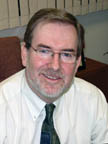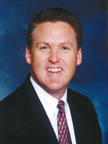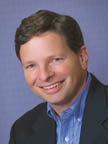It's the new year, and what better time to share some insights into the future? We asked several executives from top adhesive and sealant manufacturers to give us their thoughts on the mergers and acquisitions trend in the industry, as well as predictions on growth areas for applications for 2004 and beyond.
Participants are Kieran Drain, vice president and general manager, Avery Dennison Performance Polymers; Bob Hansen, president of Dow Corning Europe and executive director, Dow Corning Construction Industry; Mike Klonne, president and CEO, Bostik Findley Inc.; Suzanne Rowland, VP, Global Business director, Adhesives and Sealants, Rohm and Haas Co.; and Evan Williams, president, Franklin International.

Drain: In 2004, Avery Dennison Performance Polymers expects continued solid growth depending on the specific segment of pressure-sensitive adhesive (PSA) applications. Growth will stem from improved economies in North America and Europe with continued robust growth in Asia-Pacific. Traditional PSA markets are maturing in the United States and Europe, where growth beyond GDP will be in specialty, value-add applications. Asia-Pacific will see double-digit growth across a broad range of PSA applications for the foreseeable future.
Hansen: In terms of growth and sales, the industry is coming off a recessed period. Construction, with the exception of residential construction, was down. So were the automotive and transportation sectors. However, the world economies appear to be picking up steam, and I believe the adhesives and sealants industry is headed for a growth cycle in the coming years.
Because residential construction has remained strong, I don't see a big change coming from that sector. Commercial construction, on the other hand, is dealing with a lot of overcapacity in terms of office space and infrastructure. For the commercial market, I see 2004 as a transition year, but believe there will be an upswing in 2005 in new construction activity (and consequently in sealant sales) as the excess office capacity is filled up. This should hold true in both the United States and Western Europe, although I think the United States is a little stronger, economically speaking, and is going to come out of the recession sooner. We're already seeing signs of this in the United States. Although things are beginning to pick up in Europe, they're probably a good six months behind the United States.
In Asia, especially in China, sealants and adhesives growth has remained fairly strong, even when the rest of the world was experiencing a downturn. This strength extends across most industry sectors. Consequently, the need for sealants and adhesives in Asia remains high.
Klonne: I believe that 2004 and beyond will continue to be challenging but positive for the adhesives industry. The economy is clearly showing signs of recovery and improvement, and the cost optimization that has taken place in the industry over the last few years should have us positioned well to capitalize on the growth opportunities. Long-term growth will continue to be dependent on new technology and innovative ways to use adhesives in areas where they are not used today. Specifically, I see the adhesives industry growing at least at GDP levels, and those companies that are successful in commercializing innovation growing at even higher rates.
Rowland: The industry as a whole is experiencing a slower growth than in the past, especially in the western economies where the pace of growth has remained in the range of 2-3%. This creates an intense, competitive environment. However, we see good growth in emerging economies such as Eastern Europe, India and China.
Williams: We expect the global industry to continue to grow at a slightly faster pace than the global economy, as adhesives and sealants remain important to existing markets while also finding new applications. We expect competition within the industry to be extremely fierce, with some companies becoming more and more marginalized, at least in certain segments. Overseas industrial adhesive and sealant consumption is expected to continue to grow rapidly, just as it has for our business for many years. Domestically, we expect industrial adhesive consumption to be considerably less robust. The weakness of the dollar could offset some of the forces causing this shift, but it will not stop the general movement. Domestic consumer and construction adhesive and sealant consumption, on the other hand, seems to be immune to these forces in the foreseeable future.

Drain: Avery Dennison Performance Polymers expects continued consolidation among coaters/converters and among adhesive suppliers. Cost efficiency and global supply/service capability will remain key drivers.
Hansen: Consolidation and other market approach changes have become pretty commonplace across the adhesives and sealants industry, especially in the maturing segments, particularly when that maturity coincides with a challenging economic environment. As a result, a lot of companies are looking for ways to improve their competitiveness - not only through mergers and acquisitions, but also by developing new products, and finding new ways to do business that differentiate them from their competitors.
In the future, there will be constant change. Players will be changing. They will be making alliances, trying to acquire new channels, new technology and a foothold in new geographic markets. We're going to see some new business models as well.
Klonne: Consolidation over the last few years has been primarily driven by cost optimization and strategic expansion. This is different from before, where size and economies of scale drove consolidation; this will continue but it will become much more strategic and will evolve even more to support growth rather than scale or optimization. As a result, it has become more difficult to compete in the markets where prices and margins are lower and more competitive than ever. It will also become increasingly more difficult for those companies that cannot consistently grow their top line. I avoid suggesting that consolidation puts the smaller or mid-sized adhesive companies at a disadvantage because there is still room for the specialized player. The bottom line is that consolidation is simply one factor that is driving change in the industry; the companies that best adapt to all the factors are the ones who will survive and prosper regardless of size.
Rowland: Consolidation is ongoing, but the frenzied pace that the industry experienced a few years ago is gone. Companies have chosen to make small, targeted acquisitions rather than big, "transformational" ones. They are more selective and acquire in targeted areas that are aligned with their existing businesses.
Williams: There is no doubt that mergers and acquisitions have had the effect of concentrating power in a smaller number of raw material suppliers, a smaller number of adhesive and sealant manufacturers, and certainly a smaller number of customers. There is also no doubt that this trend will continue. At the same time, as this activity has unfolded, in order to generate reasonable returns on investment, acquiring companies have been pushed by shareholders to re-engineer their combined structures and also show the top line growth expected to accrue to the deals. In turn, this has created considerable pressure on industry profitability. At the same time, this trend has created some opportunities for smaller companies to fill voids left by reductions in people and service.

Drain: Escalating feedstock prices and continued volatility/uncertainty in key raw material markets remain a significant challenge for specialty chemical producers. Avery Dennison Performance Polymers will meet these challenges by leveraging worldwide purchasing volumes, commissioning new higher-efficiency PSA capacity in North America and Europe, and growing market share in the merchant PSA market.
Hansen: Because of the competitive nature and maturing lifecycle of a lot of sealant segments and applications, most of the companies we serve have a fairly significant need to increase their productivity to remain competitive and to be able to grow. Consequently, as a key supplier to the industry, our biggest challenge is to find new ways to enable our customers to be more productive and to operate more profitably.
In response, we're creating new products, new solutions, and new business models designed to meet the need for faster throughput and lower manufacturing costs.
For example, we recently introduced a revolutionary new reactive silicone hot melt sealant designed especially for automated window and door manufacturing. Not only do we supply the material, but we also partner with equipment manufacturers to deliver a total solution that significantly improves productivity while reducing manufacturing costs.
We've also launched a new business model that enables customers who don't need a lot of support services to purchase our material "unbundled" (without the services) at the lowest possible price.
These are just a few examples of the types of steps we are taking now - and will continue to take in the future - to meet our sealant and adhesive customers' needs to drive down costs, be more productive, innovate, and grow their business in both existing and new markets.
Klonne: The biggest challenges our company is facing today are not too different from what they were five, 10 and even 20 years ago. They are:
- Growth, growth, growth. How and how much.
- Hiring and developing the best employees that fit your business capabilities and your company's culture.
- Staying customer focused. The adhesive business is about markets and customers. Your culture, your systems and your commitment had better be about it.
- Technology development. The balance between product line improvement, new product development and innovation.
- Constantly improving and reinventing the quality of our processes.
- Safety and environmental compliance.
- Cost optimization not as a project but as a part of everything we do.
These are the areas that we focus our strategic thinking and planning around. From the strategic planning mode directly to implementation and measurement. From implementation and measurement to direct employee accountability and performance appraisal.
Rowland: One of the major challenges we face is the prospect of slower growth in the industrialized western countries where we have a significant part of our business (NAR and ER). Our sales in Asia Pacific, despite the strong growth rates, are not yet large enough to compensate fully for the slowdown in the more mature markets.
Another challenge is to get the proper value for the critical technologies we offer. The part of the adhesive in the finished good is small in weight but huge in importance and the characteristics it imparts in the final product. Our products bring high added value and require significant research effort to develop. We don't always think these products earn the right pricing to reflect their development.
Rohm and Haas continues to bring innovative products to market, such as our water-based laminating adhesives and our solventless adhesives with extremely low residual monomer, which can help make the finished good better or safer. We also are working to make further improvements in our operations, to make them even more cost effective and fast. For example, we are well on our way toward completing the installation of our global Enterprise Resource Planning system using SAP.
We are also expanding our business in Asia. We have started up in August 2003 our new Indian plant in Taloja/Mumbai. This plant will serve the growing packaging demand in India and the rest of Asia for a number of Rohm and Haas adhesives.
Williams: By far the biggest challenge that any business faces today is the growing commitment of customers to work feverishly to "commoditize" products. Just as important is the apparent willingness of many suppliers to accommodate this effort. Our company has worked very hard to adapt to the competitive landscape by adopting the financial analytical tools of our larger, publicly traded competitors and by driving waste out of our organization. At the same time, very few businesses can compete long-term by doing only this. We are committed to developing meaningful points of differentiation between ourselves and our competitors, recognizing that this is becoming increasingly difficult as the rate of change accelerates. To that end, we continue to emphasize the importance of innovative applied research and development. The one factor that gives us hope in this is the great commitment that our people have demonstrated to our company and the intricate knowledge that they have of our customers and their needs.

Drain: While pricing pressures down the PSA value chain have been intense and higher monomer prices in 2003 squeezed margins, Avery Dennison Performance Polymers saw robust unit volume growth in 2003 due to improving economies in the United States and Europe, and continued share gain in several PSA markets.
Hansen: The economy has definitely had an effect on our business, although that effect has varied from region to region. Obviously, 2003 was not a banner economic year for anyone, with business conditions being what they were.
At the same time, we feel that Dow Corning has probably outperformed the general market and the general economy. This is due in large measure to the steps we've taken to help the industries and segments we serve meet their productivity and profitability challenges. These new solutions and business models have done a lot to lessen the direct impact on Dow Corning.
Klonne: The economy has had various effects depending on which part of the overall business you look at. In our Construction and Distribution Business, the housing market has been favorable and clearly helped our business. In other markets like Automotive, Textile and some parts of Product Assembly, the economy has made it difficult to grow.
Rowland: The slow economy has obviously affected our business like all other industries and we have seen slower growth.
Williams: The last three years, beginning in mid-2000, have been challenging years for parts of our business. The domestic manufacturing sector has been hard hit, and we have not been immune to that. The residential construction segment of the economy, meanwhile, has been very strong, so these two segments have had offsetting effects. Recently, the economy appears to be improving, and we are optimistic about its effect in 2004.

Drain: Avery Dennison Performance Polymers expects continued overall compound growth for PSAs in the next few years, with specialty film labels and graphic self-adhesive films particularly strong.
Hansen: I definitely anticipate continued growth. But I think there are some trends in the market that will affect that growth and where you see it.
There are productivity drivers. And there are performance-in-application drivers. Because of where we've been, economically, the need for productivity has outstripped the need for performance in a lot of markets.
I think in the electronics and the pressure-sensitive adhesive markets, we'll be looking at new low-temperature-cure materials that improve productivity or enable the use of less costly substrates, or materials uniquely suited for high-speed processing or application.
However, as the economy looks up, I think we'll see more of a drive for increased performance.
In the construction market, there seems to be a growing demand for and sensitivity to designing in more protection - such as protective window systems that are resistant to all manner of attacks, whether those attacks come from humans with bombs or nature with its earthquakes and hurricanes.
We're also seeing an upswing in value-added, clean and green, environmentally friendly applications. There is a growing need for sealants and adhesives that are easy to clean, reduce dirt pickup, or contribute (by virtue of their longevity) to a building's sustainability.
Klonne: I see the good adhesive companies growing at GDP levels or better over the next few years. As I said earlier, those companies that have positioned themselves well through hard cost optimization over the last few years should be ready for the growth opportunities that will become available. I hesitate to identify specific markets because of the diversity of the industry and the competitive nature of the industry.
Rowland: We see good growth in selected areas. For example, we see good growth in the health care industry, where Rohm and Haas has recently concluded an alliance with Dow Corning Corp. aiming at creating innovative materials and services to address unmet needs in wound care, transdermal and topical drug delivery, and related medical device applications.
Williams: Being a smaller company, we probably do less analysis of macro-markets than our larger competitors, so our level of enthusiasm for any given market has a lot more to do with our own competencies than with the future of those markets. Certainly, we want to avoid investing heavily in markets that are eroding, but beyond that, we look for reasonable markets that provide opportunity for us to set ourselves apart. We believe that there will be many growing end-uses for adhesives and sealants; the number and size of which will be limited only by the imagination of prospective users and the collective creativity of the industry to capitalize on that imagination. We hope to be invited to participate in the process to find some of those uses.
